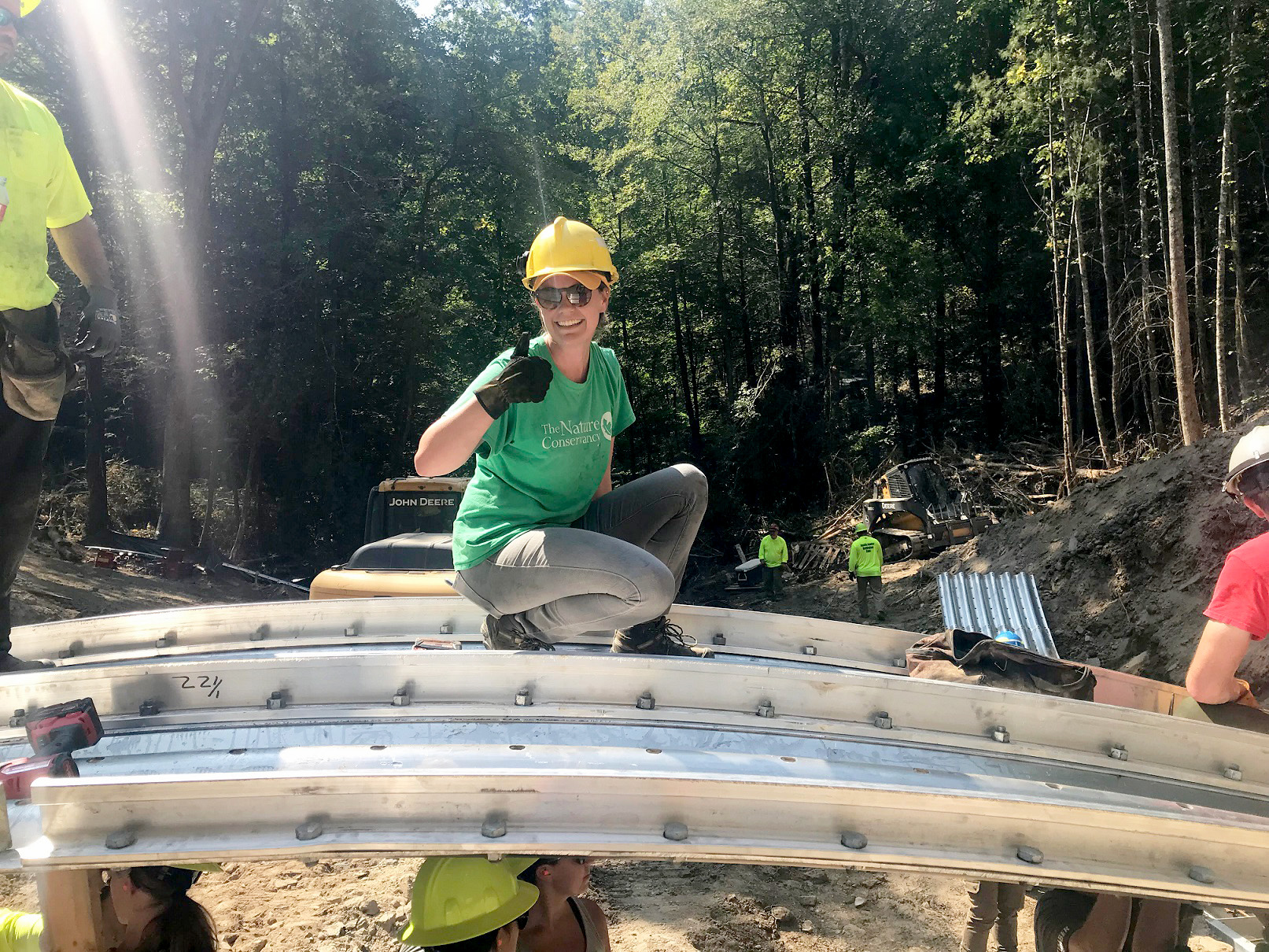Aquatic Connectivity Teams in the Southeast

The 2023 SECAS Goal Report is out and tells some really interesting stories about our successes and our opportunities for improvement as we look forward to our 2060 goal of a 10% or greater improvement in the health, function, and connectivity of Southeastern ecosystems.
Across our connectivity indicators, we see one metric well in the green—aquatic connectivity. In fact, data show that aquatic connectivity increased by about 16% per year from 2012-2022, which means we’re seeing about a 64% increase every 4 years—far greater than our goal of a 1% increase every 4 years. This is of course, only part of the story and there is still much work to do! We still don’t truly understand the full breadth of aquatic barriers in the Southeast, emphasizing the importance of data collection, particularly for road-related stream barriers. Luckily, our friends at the Southeast Aquatic Resources Partnership (SARP) are working to coordinate biologists, practitioners, recreational paddlers, and myriad other interested parties by establishing Aquatic Connectivity Teams (ACTs) across the Southeast.
In addition to providing top-notch data, developing aquatic barrier assessment protocols, and training on that methodology, SARP also works, in collaboration with American Rivers, to establish and coordinate ACTs. These are state-based teams that are developed upon request from interested state partners. Teams make barrier removal projects a reality by combining effort across organizations and jurisdictions and working collaboratively to identify, prioritize, and implement projects. SARP provides technical support to each of these teams on barrier identification, prioritization, and by making additions to the inventory when team members identify undocumented barriers.
As a long-time member of the GA ACT and former practitioner, I can speak firsthand to the value of these teams when managing a barrier removal project. As any project manager will tell you, barrier removal projects are like snowflakes–each one is unique, and comes with its own set of challenges. From permitting to budgeting, public outreach and historic preservation, there are a lot of factors to consider when embarking on these projects, and it is critical to have a robust team of experts to help you along the way. That’s what ACTs provide—a community of folks with diverse expertise who all want to see the project succeed.

If you are taking on an aquatic connectivity project, whether it’s in the planning phase or shovel-ready, reach out to SARP today and get involved in the ACT network—you won’t regret it! There are established teams in North Carolina, South Carolina, Virginia, Florida, Georgia, Tennessee, Alabama, Arkansas, Texas, Louisiana, and Missouri and many of our user support staff sit on these teams as well! SARP is enhancing aquatic connectivity in the Southeast by empowering people with actionable data and helping to coordinate a shared space for knowledge exchange. ACTs meet annually in person and quarterly via teleconference.
Here are just a few of the upcoming opportunities to get involved in your local ACT:
| Florida | FL ACT in-person meeting | April 3-5 | Registration link |
| Georgia | GA ACT in-person meeting | March 6 | Registration link |
| North Carolina | NC ACT in-person meeting | March 19 | Registration link |
| Arkansas | AR ACT in-person meeting | April (date TBD) | |
| Tennessee | TN ACT in-person meeting | February 28 |
If you’re interested in joining one of these meetings/teams, starting an ACT in your state, or would like to learn more, feel free to reach out to me or Shawna Fix with SARP (contact information below).
- Alex Lamle: Alexandria_lamle@fws.gov
- Shawna Fix: shawna@southeastaquatics.net